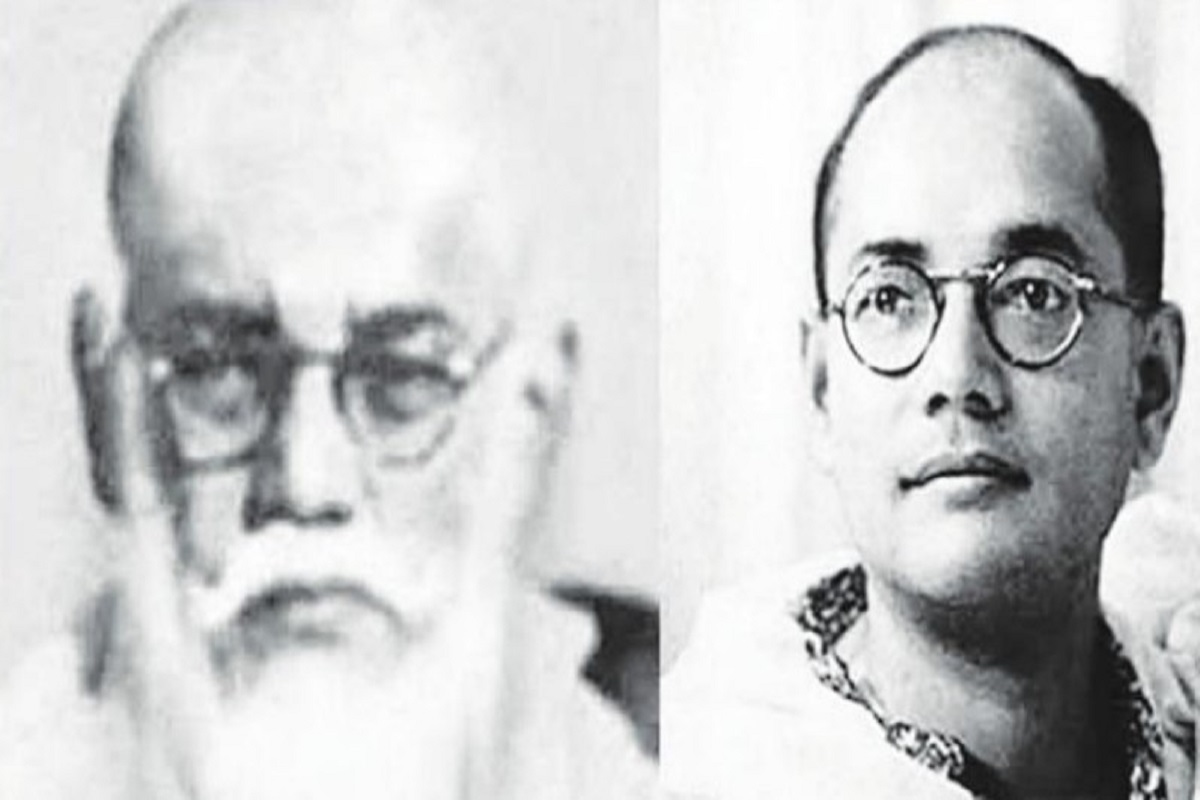Finally, all these bring us to the most contested issue of the disappearance saga: the identity of the saint of Faizabad. Let us deal with it by referring to witnesses’ accounts, materials found at the saint’s abode at Faizabad, forensic reports, and the reason why the saint decided to remain incognito. The final phase of the disappearance inquiry is an investigation into the identity of ‘Gumnami Baba’ who lived in different places of UP staying behind a curtain. His disciples addressed him as ‘Bhagwanji’.
Let us start with the people who met him. Among the people who saw Netaji before 1945 and met the saint were Professor Atul Sen, Leela Roy, Pabitra Mohan Roy, and Apurba Chandra Ghosh.
Advertisement
Prof. Sen following Netaji’s advice in the 1930s fought an election from Dhaka and won a legislative seat. He met the saint in Nimsar [Naimisharanya] in 1962 and wrote to Prime Minister Nehru that Netaji was alive and engaged in spiritual practice somewhere in India.
Sen also informed Dr. Pabitramohan Roy of the INA secret service and historian Ramesh Chandra Majumdar about his experience. Dr. Roy, in turn, informed Leela Roy, an associate of Netaji and a sterling social reformer. All of them, except Ramesh Chandra Majumdar, met the saint.
Leela Roy wrote to Netaji’s friend, Dilip Roy, son of the famous Bengali poet Dwijendralal Roy, that his friend was alive and in India. Apurba Chandra Ghosh said before the Mukherjee Commission that an incident took place when Netaji was staying at Manikgunj Kutcharibari during the Dacca conference of the Forward Bloc in 1939. Ghosh offered him combs as Netaji came out of the bathroom. Netaji smiled and said that he should have brought the combs on a plate. When Ghosh told the saint that he hailed from Manikgunj, the saint narrated this incident.
Ghosh was stunned. He had never shared this personal experience with anybody. How did the saint know about it?
There were others who had not seen Netaji before 1945 but met the saint. Among them were Mr. Sunil Krishna Gupta, Mr. Bijoy Nag, Mr. Surajit Dasgupta, and Mr. Jagatjit Dasgupta.
Sunil Gupta was a relation of Dinesh Gupta of ‘Binoy, Badal, Dinesh’ fame. Bijoy Nag was the editor of ‘Jayasree’ a Bengali journal. Jagatjit and Surajit were Mr. Gupta’s nephews. They stated before Mukherjee Commission that the saint was Netaji.
In 1963, Mr. Gupta heard from Netaji’s elder brother Suresh Chandra Bose that Netaji was staying in Naimisharanya of UP. He went there and met the saint in a Shiva temple. The saint talked about changes in domestic and international politics. He accurately predicted Pakistan’s internal changes leading to the creation of Bangladesh. His comments on the dissolution of the Soviet Union were prophetic.
These, unmistakably, indicate that he had a plan. He said that he was hiding his identity to execute that plan. The materials found at the Faizabad residence of the saint reveal his identity all the more. There were books with his handwriting on them, a map drawn by him showing a route from Stalinabad of Tajikistan via Kashgar on the Silk Road, to kiuchuan of China and then to India, a photograph of Netaji with his father, large German binoculars, and a typewriter. The handwriting samples found on books were examined by handwriting experts.
B Lal, a retired government examiner of questioned documents who was given a lifetime achievement award in forensic sciences, identified the handwriting samples of Gumnami Baba as those of Netaji. Other experts did not agree with Lal’s findings. But their statements were self-contradictory and their reports did not offer any reasoning for their conclusions.
Madhusudan Lal Sharma, a government examiner of questioned documents, first denied that individual characteristics like unique signs and insertions determined a document’s authorship. Later, he accepted that individual characteristics of handwriting were the most important determinants of the authorship of documents.
Obviously, Sharma somehow tried to establish a predetermined conclusion. Dr. Subrata Kumar Mandal of Forensic Science Laboratory, Kolkata, said that he considered the shape and frequency of punctuation marks, marks of a caret, etc., but his report mentioned none of these. Lal’s report is far superior to those of Sharma and Mandal.
Nevertheless, Mukherjee Commission went by the majority’s version. Central Forensic Science Laboratory, Kolkata conducted a DNA test of teeth found at Ram Bhavan of Faizabad and informed Mukherjee Commission that they did not match with the DNA of the Netaji family. However, in responding to a RTI query, CFSL Kolkata refused to disclose the electropherogram (essential to DNA analysis) of the DNA test. They argued that such disclosure might affect India’s sovereignty. They had already said that DNA did not match.
Now if the electropherogram of the DNA test had not matched, what prevented them from stating that? Meanwhile, the Justice Sahai Commission appointed by the Uttar Pradesh government to enquire into Gumnami Baba’s identity functioned with a preconceived notion that the saint died in Faizabad despite the fact that there was no death certificate and there was no scope for identification of a covered dead body.
Sahai Commission stated that it was the saint’s fundamental right to lead a life of his choice under Article 21 of the Indian Constitution. One would like to know why he inquired into the saint’s identity. Dr. R P Misra, who was in the room at Rambhavan when the saint allegedly died, said on camera that the body that was cremated at Guptarghat of Faizabad was not that of the Saint. What happened then? Certainly, the man disappeared again.
(Concluded)
